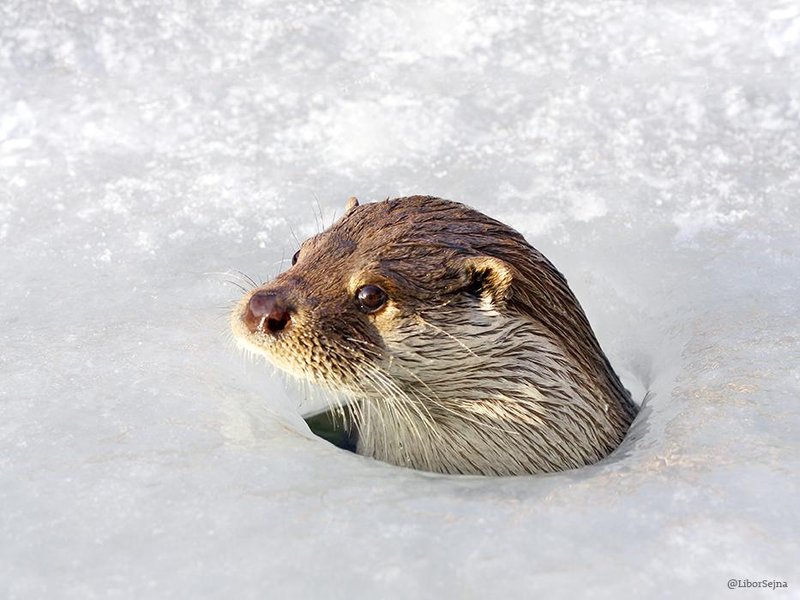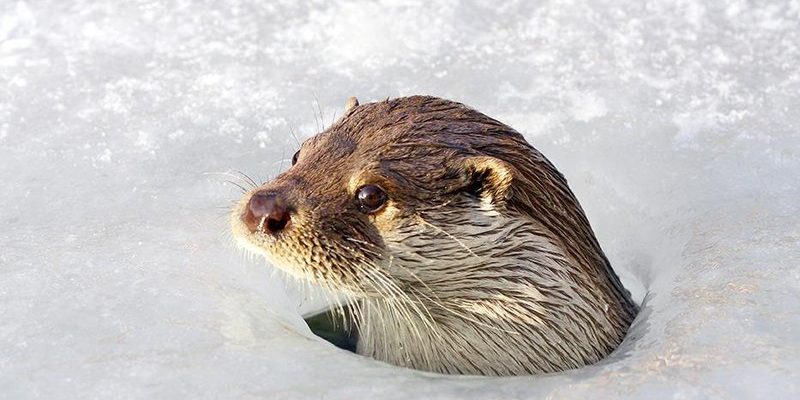
Here’s the thing: while otters are generally not aggressive toward people, they can exhibit surprising behaviors that might catch you off guard. Imagine a small dog that’s friendly most of the time but can get snappy when it feels threatened. Similarly, otters can bite if they feel scared or cornered. So, understanding their behavior can be crucial in avoiding any unpleasant encounters.
In this article, we’ll explore the fascinating world of otters, how they interact with humans, and the circumstances under which they can indeed be dangerous. We’ll break down their behavior, habitat, and more, so you can have a better grasp of these intriguing animals.
Understanding Otter Behavior
Otters are social creatures, often seen frolicking together in groups called rafts. They’re known for their playful antics, like rolling in the water and chasing each other. However, their social nature can sometimes mask their more aggressive instincts. In the wild, otters are predators, and their primary objective is survival. In nature, even the cutest animals have to defend themselves.
You might be surprised to learn that otters have powerful jaws and sharp teeth, which they use to catch and eat fish, mollusks, and other prey. When cornered or feeling threatened, an otter can use these strong features to defend itself. It’s similar to how a squirrel might become defensive if you get too close to its nest.
Additionally, otters are territorial. If they sense an intruder in their space—whether it’s a human getting too close to their den or a rival otter—they may react aggressively. This can lead to bites and even more severe encounters if the situation escalates. So, while they’re usually friendly, it’s important to recognize when they might feel threatened.
When Otters May Bite
You might be asking, “Under what circumstances would an otter bite a human?” While it’s rare, there are specific scenarios where this can occur. Let’s take a closer look.
1. Feeling Threatened: If an otter feels cornered or in danger, it may resort to biting as a form of self-defense. This could happen if a human gets too close to a den or a mother otter with her pups.
2. Feeding Time: Otters are food-driven creatures. If they’re in a feeding frenzy, they might become less tolerant of nearby humans. Imagine a hungry toddler who won’t share their food!
3. Captivity Stress: In captivity, otters may exhibit more aggressive behaviors due to stress. If they feel trapped or uncomfortable, they may lash out. This is why it’s essential for zoos and aquariums to provide enriching environments that reduce stress for these animals.
It’s important to note that otter bites, while they can occur, are not common. Most interactions with humans are harmless. Yet, understanding these scenarios provides vital insight into how to approach otters safely.
Habitat and Human Interactions
Otters can be found in diverse habitats, from rivers and lakes to coastal areas. They are adaptable animals, and their proximity to human environments often leads to amusing, yet sometimes risky, encounters.
In urban areas, otters might search through trash or even venture into swimming pools. While their curious nature can make for entertaining moments, it’s essential to respect their space. Just like you wouldn’t want someone rummaging through your belongings, otters also appreciate their privacy.
Moreover, as humans encroach upon their habitats, otters may feel more threatened. Reducing deforestation and pollution can help keep these creatures safe and minimize aggressive encounters. If you live in an area where otters are common, be aware of your surroundings. Avoid approaching them too closely, especially if you see them with young pups.
Precautions to Take Around Otters
If you find yourself in an area where otters are present, it’s wise to know how to interact with them safely. Here are a few tips to keep in mind:
- Keep Your Distance: If you spot an otter, admire it from a distance. Respect its space, especially if it appears to be feeding or caring for its young.
- Avoid Surprise Encounters: Be mindful of where you step, especially near water. Make noise as you approach, so you don’t startle any otters nearby.
- Don’t Feed Them: Feeding otters can lead them to associate humans with food, making them more aggressive in the future. Let them hunt for their meals!
By taking these simple precautions, you can help ensure that your encounters with otters remain positive and safe.
Otters and Rabies: A Rare Concern
A common concern with wild animals is the risk of rabies, and while it’s not prevalent in otters, it’s worth noting. Like other mammals, otters can contract rabies, and if they’re infected, they may exhibit unusual behaviors.
If you encounter an otter that seems unusually aggressive, disoriented, or has trouble walking, it’s wise to keep your distance. Rabies is a serious illness, and it can be transmitted through bites. However, remember that such situations are extremely rare, and most otters are healthy, playful beings.
The key is awareness. If an otter seems off, report it to local wildlife authorities so they can assess the situation.
Comparing Otters to Other Wildlife
When considering potentially dangerous wildlife, otters aren’t the only creatures to be cautious around. Let’s briefly compare otters to a few other animals you might encounter.
– Beavers: Like otters, beavers are generally non-aggressive but can become defensive if their dams or young are threatened. They also have powerful teeth that can deliver painful bites.
– Raccoons: Raccoons are often cute but can carry rabies and exhibit aggressive behaviors, especially if they feel trapped or threatened. They’re best admired from afar!
– Coyotes: These canines typically avoid human contact. However, they can become bold if food is easily accessible or if they’re protecting their territory.
In general, most wildlife is best respected from a distance. Every animal has its own quirks and caution signs that indicate when they might feel threatened.
In wrapping up, the answer to the question “Can the otter be dangerous to humans?” is more nuanced than a simple yes or no. While otters can become aggressive under certain circumstances, they are primarily harmless creatures that prefer to avoid conflict. By understanding their behavior and respecting their space, you can enjoy watching these playful animals while staying safe.
Embracing responsible wildlife interactions not only protects you but also ensures that otters can thrive in their natural habitats. Next time you’re near water, take a moment to appreciate these amazing creatures—from a respectful distance, of course!

